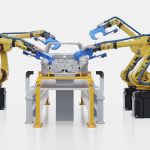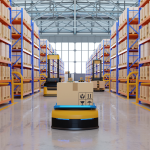New research shows emissions from AI chip manufacturing have surged 357% in a year, exposing a lesser-known environmental cost of the AI boom—and a growing supply chain risk.
AI Hardware Manufacturing Emerges as Major Emissions Driver
The environmental impact of artificial intelligence isn’t limited to the energy-hungry data centers powering LLMs like ChatGPT. A new report by Greenpeace East Asia, released April 10, reveals that electricity used to manufacture AI chips surged by 350% between 2023 and 2024—and is expected to grow 170-fold by 2030.
While data centers have drawn scrutiny for their electricity consumption, the chipmaking process itself is proving to be equally carbon-intensive. The manufacturing process of AI hardware carries a significant environmental footprint,” said Alex de Vries, co-author of the report and founder of Digiconomist. As chipmakers scale production to meet soaring AI demand, emissions linked to AI chip manufacturing could reach 16 million metric tons of CO₂ by 2030.
Much of the industry’s fabrication base remains in East Asia, where fossil fuels dominate energy grids. Producing a single AI chip requires a complex, energy-intensive process—from slicing and polishing silicon wafers to etching intricate circuit designs and packaging the chips for use in a wide array of electronic and AI-driven devices.
AI Demand May Stress Supply Chains and Sustainability Goals
Separate research from McKinsey forecasts that AI chip demand will require up to 32.5 million additional wafers by 2030. That’s before factoring in the electricity consumed by data centers—set to rise 160% by the end of the decade, according to Goldman Sachs. The International Energy Agency notes that a single ChatGPT query consumes nearly 10 times the power of a standard Google search.
This dual pressure—on upstream manufacturing and downstream compute infrastructure—raises important questions for supply chain and procurement leaders. AI’s environmental costs are no longer abstract or distant. The next generation of carbon accounting, particularly Scope 3 emissions, will need to reflect the full lifecycle of AI technologies—from raw material extraction to chip fabrication and deployment.
AI’s Supply Chain Risks Are No Longer Secondary
AI isn’t just a software revolution—it’s a hardware one, and supply chains are at the heart of it. The emissions tied to chip production, largely concentrated in fossil-fueled regions of East Asia, introduce a new dimension of operational risk: sustainability non-compliance. As regulatory pressure mounts in the EU, UK, and increasingly the U.S., companies that rely heavily on AI hardware must now start mapping the carbon cost of their upstream supply networks.
For procurement and supply chain directors, this isn’t just about ESG reporting—it’s about supplier selection, regional diversification, and long-term risk exposure. If AI is to be part of a future-ready digital strategy, then the question becomes: are your suppliers—and your sustainability practices—ready for what AI demand will do to emissions accountability?
The era of overlooking hardware sustainability is over. Companies building AI capabilities at scale must now embed emissions intelligence into supplier scorecards, sourcing models, and investment decisions. Otherwise, the same infrastructure powering innovation could quietly become a reputational and regulatory liability.







